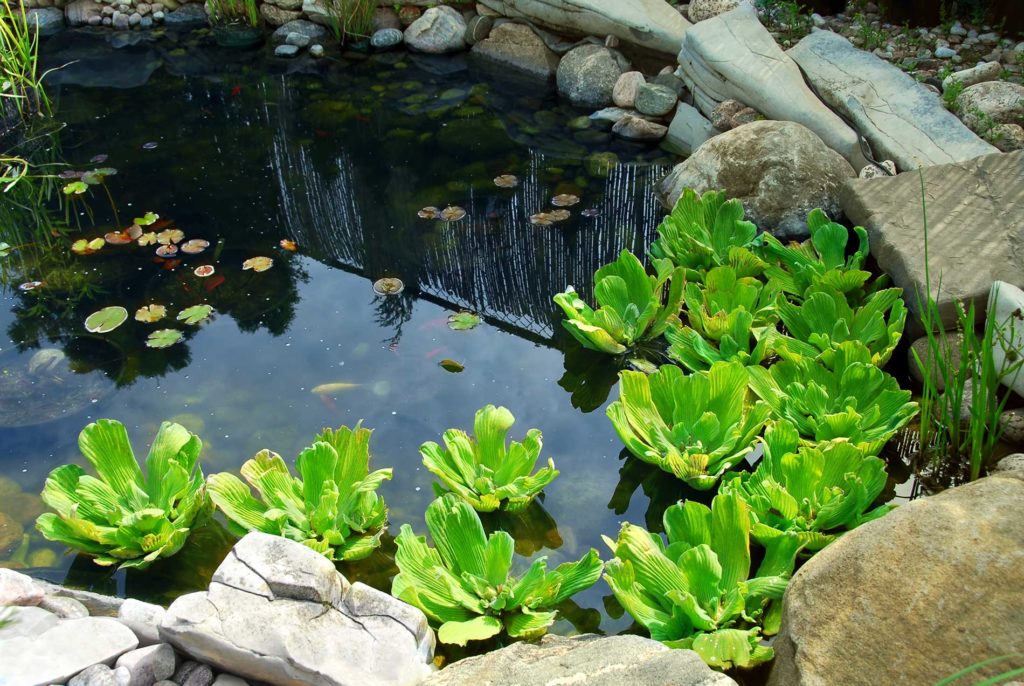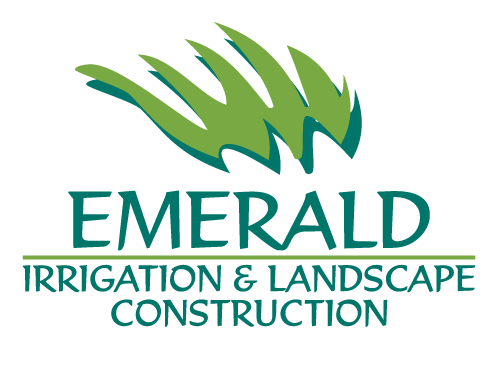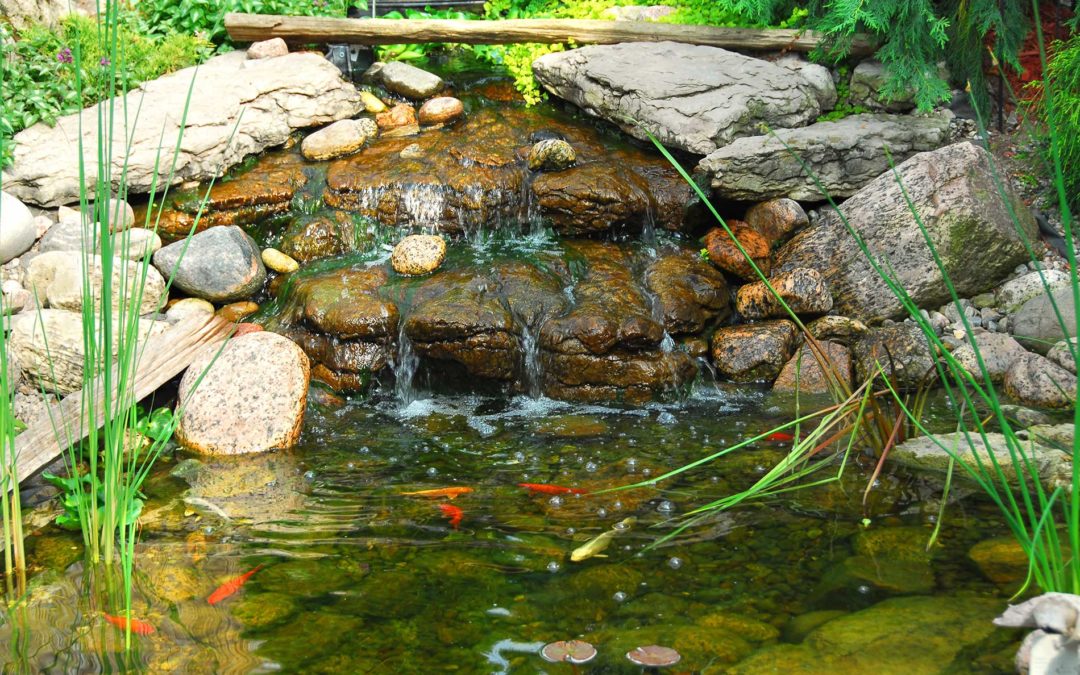Welcome to a refreshing season of renewal and growth! If you’re a proud owner of a fish pond in Penticton, British Columbia, you understand the unique charm and tranquility it brings to your outdoor space. Spring is a crucial time for your fish pond, much like Mother Nature’s grand awakening, your aquatic environment is ready to burst back to life. To ensure that your koi, goldfish, and aquatic plants thrive, a meticulous start-up is essential.
Emerald Irrigation and Landscaping specialize in transforming outdoor spaces with a focus on conservation and low-maintenance water-scaping. With spring just around the corner, it’s time to ready your pond for the days of sunshine and enjoyment. Exuberant in our background in waterscape design and hands-on service, we look forward to sharing our expertise with the Penticton community, equipping you with everything you need to prepare your fish pond for a bountiful and beautiful spring.
1. Preparations for Spring Start-Up
Checking Equipment and Supplies
Before you even think about introducing fresh water or unwrapping your pond’s inhabitants, check all your pond equipment. From filters and pumps to UV clarifiers and aeration systems, ensure everything is in good working order. If any of these components have taken a beating from the harsh winter, now is the time for repairs or replacements. Stock up on fish food, water treatments, and tools needed for maintenance.
Clearing Debris and Preparing the Pond Area
Winter storms can leave a trail of debris in your pond – fallen leaves, twigs, and even the occasional branch. Gently remove all visible debris without disturbing the water or the pond’s structure. This is also a good time to tidy up the surrounding area, trimming overhanging branches and clearing out any clutter that may have accumulated.
2. Water Quality Management
Testing Water Quality Parameters
Water quality is the foundation of a healthy pond. Spring brings a new equilibrium to your pond’s chemistry, and testing for ammonia, nitrites, and nitrates is critical. Effective water quality management means regular testing and keeping records to note any trends or changes that may affect your fish and plants.
Adjusting pH Levels and Adding Beneficial Bacteria
Once you have your water chemistry reports, log the pH levels. For most fish ponds, a slightly alkaline pH (7.6 to 8.4) is ideal. Adjust levels if necessary following manufacturer instructions for your chosen pH-balancing product. Additionally, begin seeding your pond with beneficial bacteria to break down organic matter and reduce the potential for toxic build-up.
3. Fish Health and Nutrition
Inspecting Fish Health
Spring is an opportune time to observe your fish after their winter dormancy. Look for any visible signs of stress or sickness. A listless or unusually aggressive fish, as well as skin lesions or parasites, are all red flags that require closer attention.
Feeding Guidelines for Spring
Feed your fish a diet designed for the colder water temperatures of spring. These diets are formulated for easy digestion, which is crucial as your fish’s metabolism ramps up. Start with small, frequent feedings and monitor how much is consumed within a few minutes. Adjust the frequency and quantity as needed.

4. Plant Care and Maintenance
Pruning Aquatic Plants
Your aquatic plants also need a little TLC after their winter slug. Remove any dead foliage and trim away excess growth, ensuring the plants’ health and conserving pond space. Be careful not to over-prune; the right balance will become more apparent as the plants continue to grow in the warmer weather.
Fertilizing and Replanting as Needed
Fertilize your aquatic plants to encourage strong, vibrant growth. Aquatic plant fertilizer tablets or spikes are great for this purpose. Remember not to overfeed, as this can lead to excessive algae growth. Additionally, replant any plants that have outgrown their current spot or need a more suitable environment.
5. Seasonal Tips and Maintenance
Handling Temperature Changes
Spring can bring significant temperature swings, which can stress your pond’s ecosystem. Keep an eye on the forecast and be prepared to make adjustments. If you have a heater, use it sparingly to ease temperature fluctuations, or consider shading your pond during unusually hot days.
Preventing Algae Growth and Maintaining Clarity
Algae love the spring sun as much as we do. To keep your pond from becoming a green soup, implement a proactive approach. This includes reducing the nutrient load by cleaning your filter, limiting direct exposure to sunlight with strategically placed shade, and maintaining a healthy level of beneficial bacteria to combat algae at its root.
With this spring start-up guide, you’re well on your way to enjoying a vibrant and healthy pond. Remember that pondering a pond’s well-being is an ongoing process, with each season calling for its own set of tasks. Proper initialization in spring will set the stage for successful maintenance throughout the rest of the year, ensuring your pond remains a lush and lively oasis in the heart of your home.
Emerald Irrigation and Landscaping understands the allure and requisite care of fish ponds. From design to ongoing care, our commitment to exceptional fish pond experiences is unwavering. Should you find yourself needing professional assistance in preparing your pond for spring, do not hesitate to contact us. We stand ready with our team of experts, armed with knowledge and service that reflects the Emerald standard.
Our water features services include:
- Creeks
- Custom Waterscapes
- Fountains
- Pond Construction
- Pond Lighting
- Rainwater Harvesting
More from our blog: Create a Backyard Paradise with a Water Feature Installation

